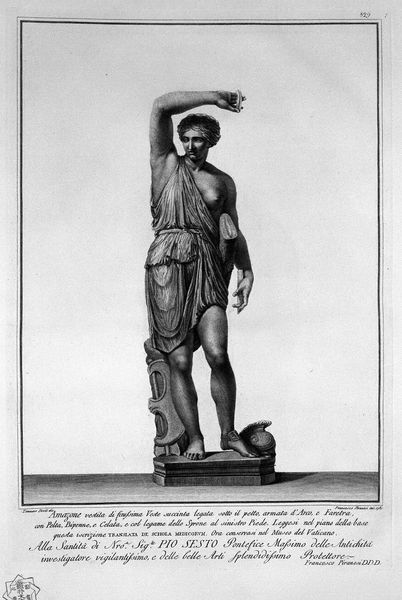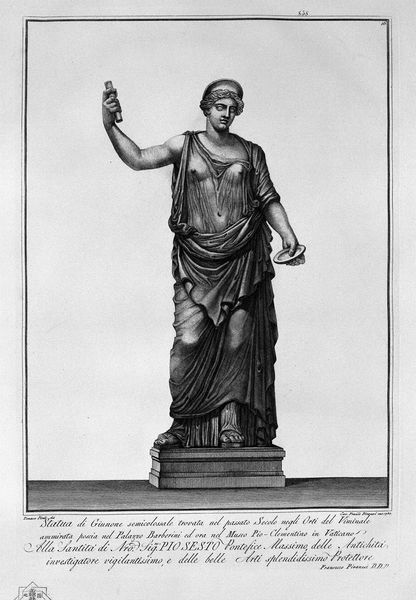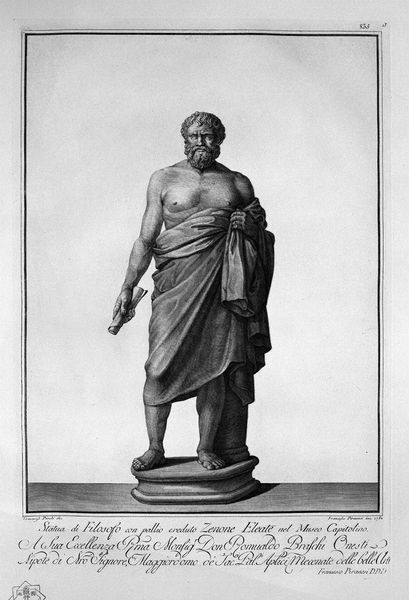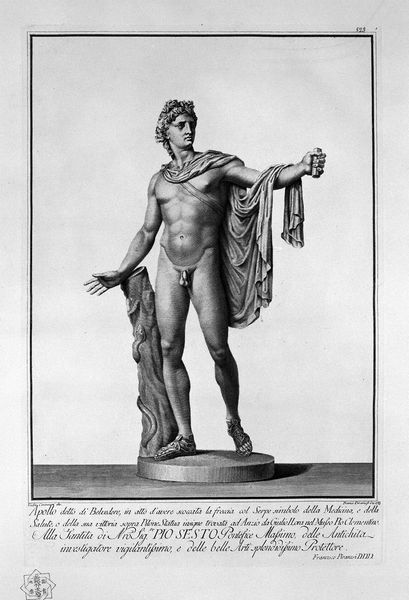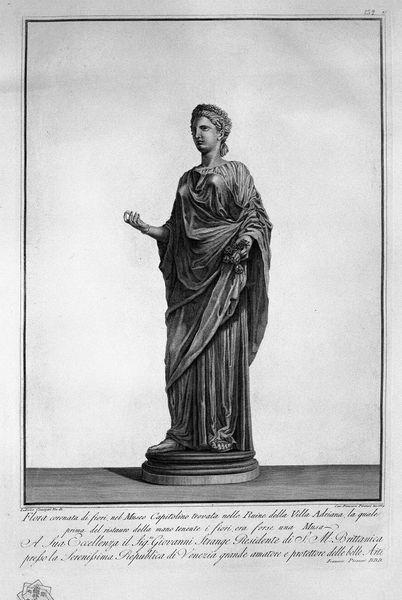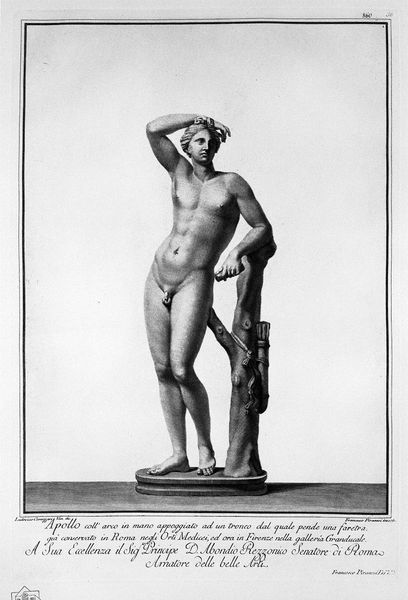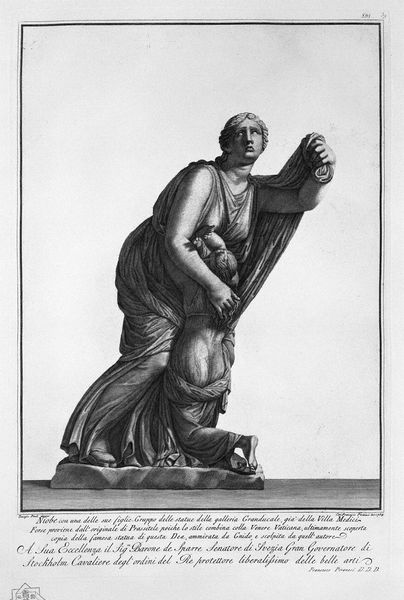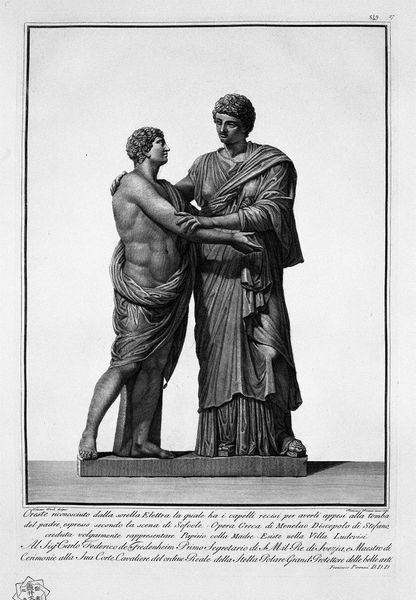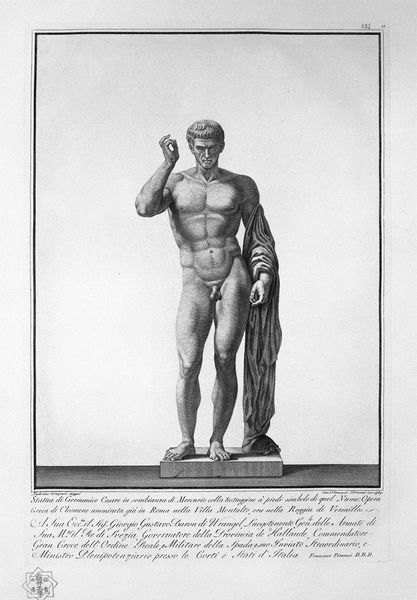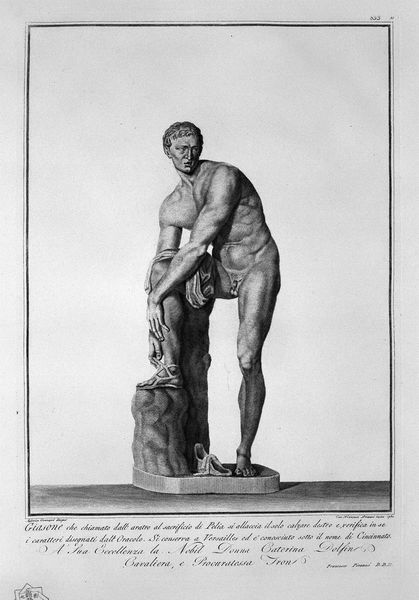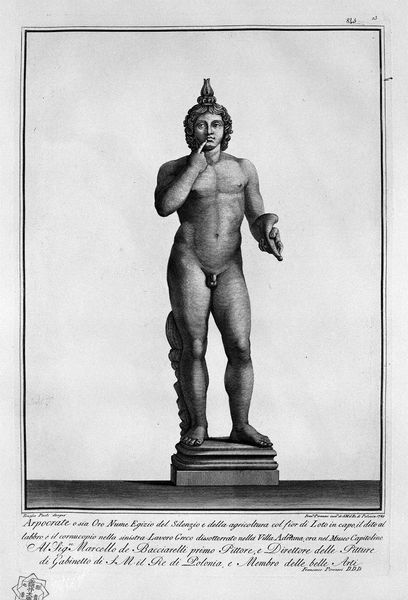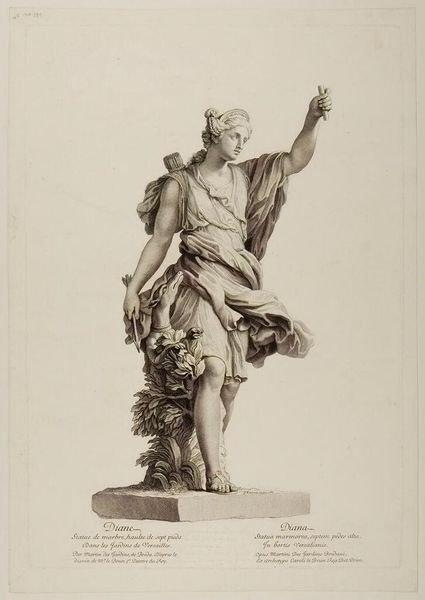
print, sculpture, engraving
#
neoclacissism
#
statue
# print
#
figuration
#
sculpture
#
history-painting
#
nude
#
engraving
Copyright: Public domain
Editor: So, this is Giovanni Battista Piranesi's "Flora Farnese." It's a print, so likely an engraving, of what appears to be a classical statue. I'm struck by the almost photographic realism of the statue and the starkness of the presentation. What do you see in this piece? Curator: The "Flora Farnese" is more than just a depiction of a statue; it's a conversation with history. Consider the symbolism: Flora, the Roman goddess of springtime and flowers. What does she represent, culturally? Editor: Rebirth? Fertility? Beauty? Curator: Precisely. Piranesi, through his precise lines, doesn't simply replicate the statue; he revives the ideas associated with her. This is Neoclassicism, isn't it? A conscious reaching back. But what's the emotional weight of these revived symbols? Are they merely aesthetic? Editor: I suppose they offered a connection to a glorious past, perhaps even a sense of order and stability during a time of great change. It’s interesting how an image, replicated as a print, could carry such weight. Curator: Exactly! The engraving, disseminated widely, turns this singular sculpture into a powerful, reproducible emblem of a cultural memory, constantly revisited and re-evaluated. Consider the effect on the viewer then, and on us now, encountering this representation of a representation. Does that add another layer? Editor: Definitely. Thinking about how the original statue, this print, and even photographs of it, all function as carriers of meaning – it’s pretty amazing. Curator: It's a powerful demonstration of how imagery can maintain a dialogue with the past. Editor: Absolutely. I’ll never look at an engraving the same way again!
Comments
No comments
Be the first to comment and join the conversation on the ultimate creative platform.
